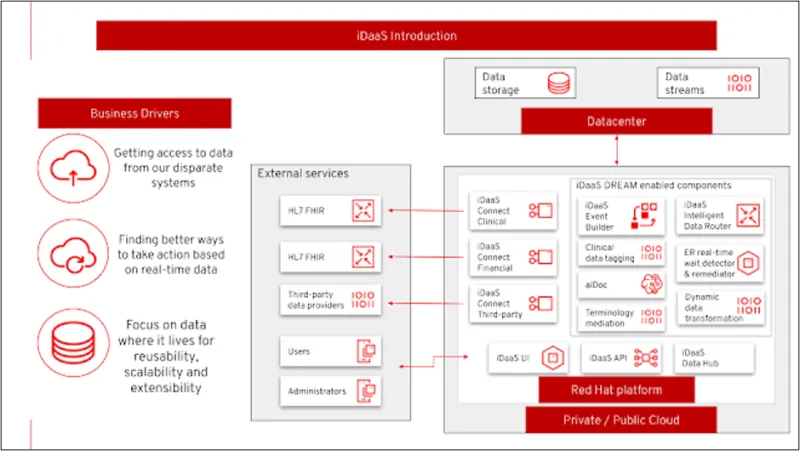In 2020, our world transformed overnight, and healthcare had to respond immediately. More than ever, the industry had to be at its best when people needed it the most. To achieve this, it's critical to have access to data and unlimited scale and to design and modify decision making, processes, and workflows for specific situations while being vendor-independent.
For the past few years, Red Hat's Portfolio Architecture team has been developing reference architectures based on customers' real-world use cases in various industries, including healthcare. We have multiple criteria for developing and vetting an architecture collection before we publish it, which you can read about in my intro article about Portfolio Architectures.
We're publishing these architectures for anyone's use in our Red Hat Portfolio Architecture Center and Portfolio Architecture Examples repository.
This article presents architectures in the healthcare industry. There are two architectures in this collection. This article provides a short overview of each and allows you to explore them in-depth on your own.

In each architecture's GitHub repository (linked in the architectures' descriptions), you'll find a table of contents outlining the technologies used, several example schematic diagrams with descriptions, and a link to open the diagrams directly into the online tooling in your browser.
Intelligent Data-as-a-Service architecture
The Intelligent Data-as-a-Service (iDaaS) architecture is about building and delivering systems and platforms in a secure and scalable manner while driving data needs for moving towards consumerization in healthcare.

Edge medical diagnosis architecture
The edge medical diagnosis architecture accelerates medical diagnoses by using artificial intelligence and machine learning (AI/ML) to detect conditions in medical imagery at medical facilities.

Learn more
These are two of the many reference architectures Red Hat's Portfolio Architects have published, and we'll continue to post them as we complete them. If you are interested in more architecture solutions like these, feel free to explore the Portfolio Architecture Examples repository.
This article originally appeared on Eric D. Schabell's blog and is republished with permission.
About the author
More like this
Bridging the gap: Red Hat Academy shaping open source talent in APAC
Ping command basics for testing and troubleshooting
Are Big Mistakes That Big Of A Deal? | Compiler
APIs And The Modernization Dilemma | Compiler: Legacies
Browse by channel
Automation
The latest on IT automation for tech, teams, and environments
Artificial intelligence
Updates on the platforms that free customers to run AI workloads anywhere
Open hybrid cloud
Explore how we build a more flexible future with hybrid cloud
Security
The latest on how we reduce risks across environments and technologies
Edge computing
Updates on the platforms that simplify operations at the edge
Infrastructure
The latest on the world’s leading enterprise Linux platform
Applications
Inside our solutions to the toughest application challenges
Virtualization
The future of enterprise virtualization for your workloads on-premise or across clouds
